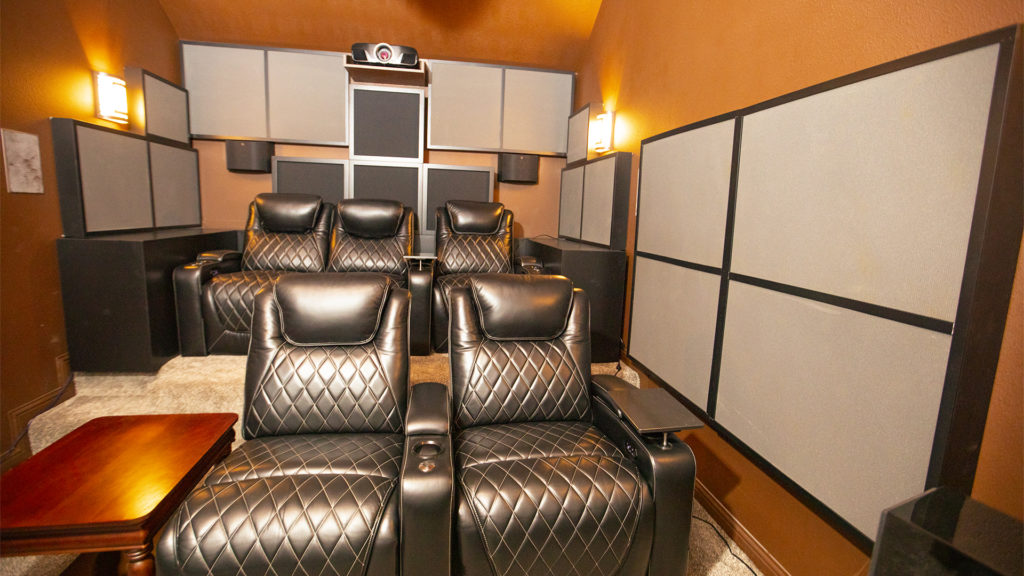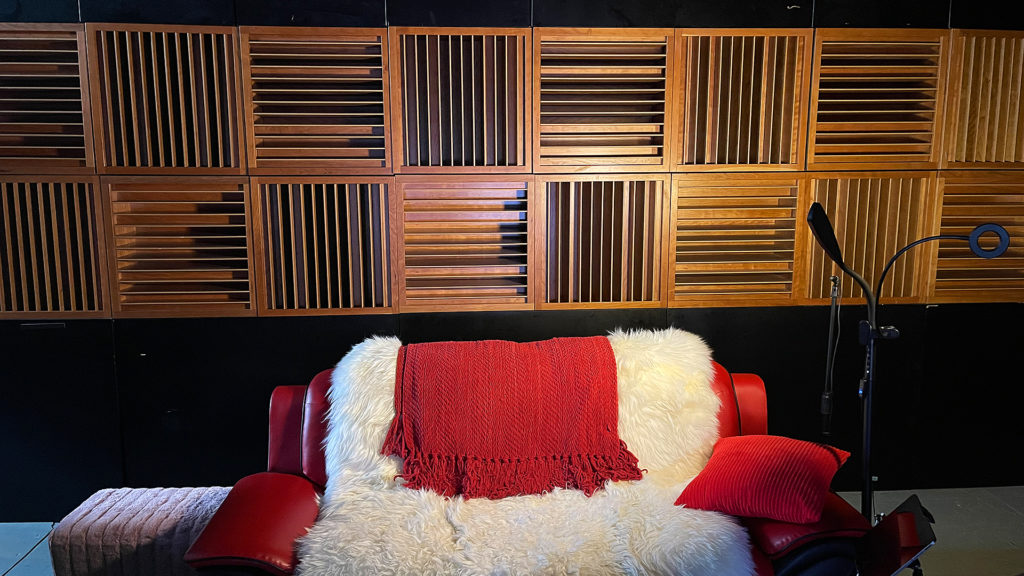
Home theater ideas come in many forms. Unfortunately, the average person has no idea about how to proceed and most of the information on the net is hyperbole and exaggeration with no understanding of the required acoustic performance parameters involved in this complicated process of home theater ideas. The first home theater idea that must be considered is a room size and volume that can support the low frequency energy which is produced by explosions and car crashes. Most do not understand that the proper room size and volume can add many positive features to the best home theater ideas. The proper room size and associated volume can be selected to minimize all future acoustic issues that home theater ideas must consider. Without the necessary room size and volume the low frequency car crashes and explosions will smother any dialogue for speech intelligibility.
https://ccrma.stanford.edu/~kglee/pubs/2dmesh_QRD®_rev1/node2.html

Low frequency pressure fills our rooms from speakers and subwoofers. This low frequency energy has 30′ – 40′ lengths. Most rooms can not accommodate those long waves of energy due to their smaller dimensions. When the low frequency energy does not fit into the dimensions of our rooms, it produces room modes. Room modes are air distortion that is created by this energy not fitting within our home theater room dimensions. They can exaggerate or attenuate certain octave bands. If they exaggerate then we hear more of the lower frequency energy than we want to. A common example of this phenomenon is what people call “bass boom”. If room modes attenuate certain octave bands, then you may not hear any frequencies within those octave bands at all. Neither of these two events are welcome in any home theater ideas.
https://www.acousticfields.com/product/acoustic-foam/

Not only do we have to choose the correct room size and volume to manage low frequency energy within our home theater ideas, we must now manage middle and high frequency energies. Middle and high frequency ray energy produce reflections from our wall surfaces. Reflections can be welcome to a certain degree or can be viewed as distortions. Reflections can be beneficial if your goal is to increase reverberation times. Reverberation is defined as how long a sound stays around within the room after it has been sund, spoken, or played. Reverb contributes to the liveliness of the presentation. Reflections can also produce distortion such as in two channel listening rooms. Reflections interfere with the direct sound from your speakers from the front and sidewalls. With two channel audio, there are three main reflections that must be managed with the proper rates and levels of absorption for music and voice.
https://www.acousticfields.com/product/acda-10-studio/

Once you have selected the proper room size that will work well with the lower frequencies, you have managed the reflections properly so you have a balance of reflected and direct energy, you can then proceed to choose the equipment you wish to use within the room. Let me rephrase that. The room will choose how many sound sources it can handle. This is a common mistake most make in any home theater idea. Most choose too many channels which produce too much energy for the room size and associated volume. The Atmos systems even have speakers in the ceiling. You must make sure you are not using too much energy for the room size and volume.
https://en.wikipedia.org/wiki/Dolby_Atmos

Any set of home theater ideas must include the proper rates and levels of absorption when it comes to low, middle, and high frequency sound management using absorption. Low frequency energy treatment is all about providing enough surface area coverage on the four walls, floor, and ceiling. Low frequency pressure fills the complete room. You must treat every surface with enough treatment to manage all of the low frequency pressure produced by all the theater channels. Middle and high frequency absorption must also follow the same requirements. You must select a sound absorption technology that has the proper rates and levels of absorption for voice and music. Diffusion is another option to consider. Diffusion is a technology to make a small room sound larger.







